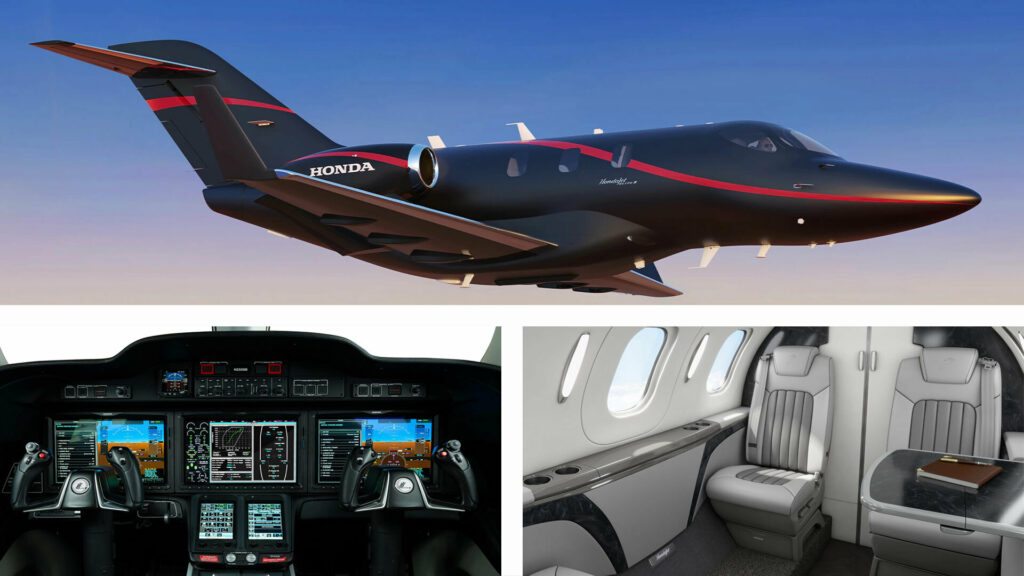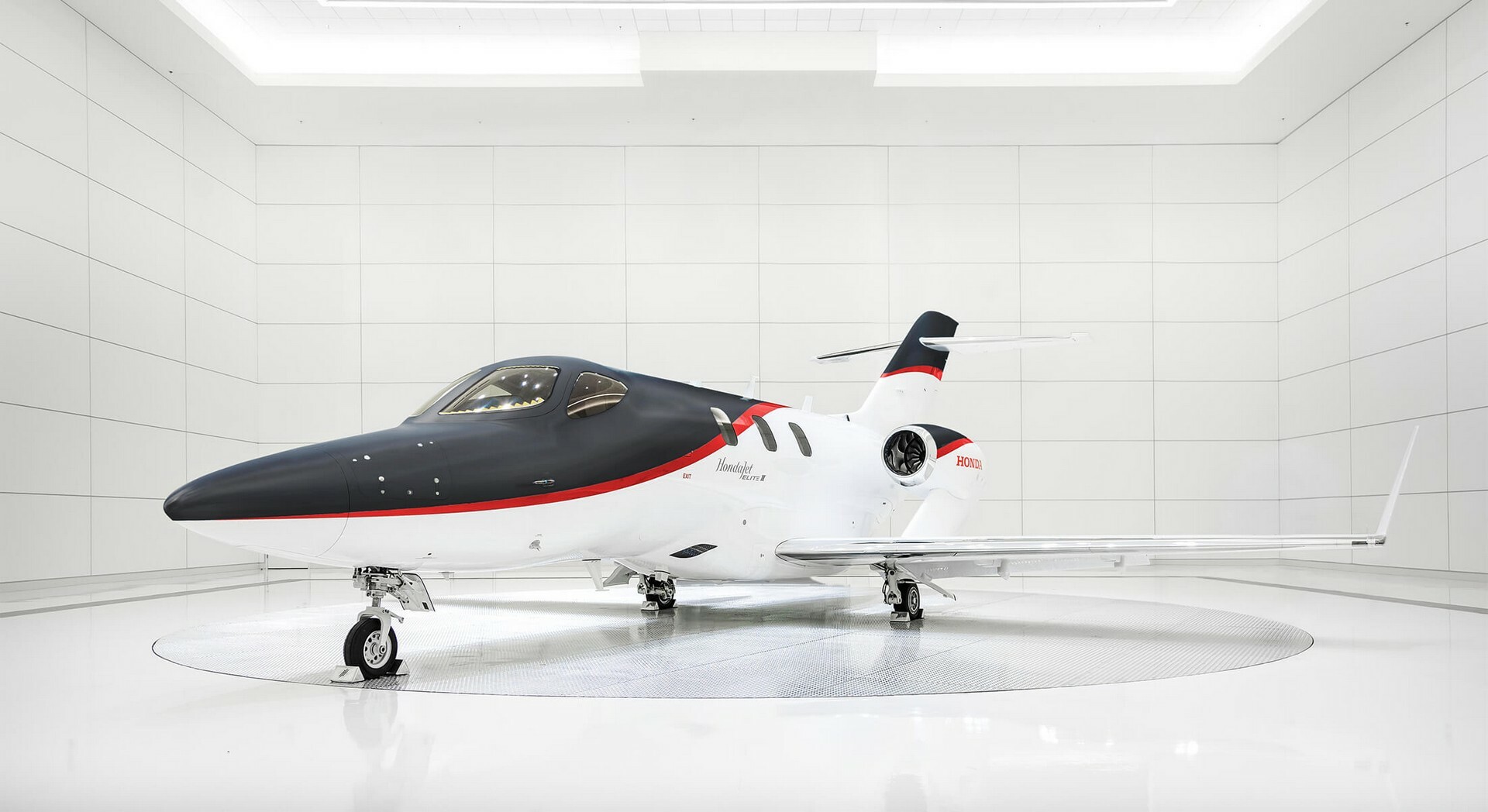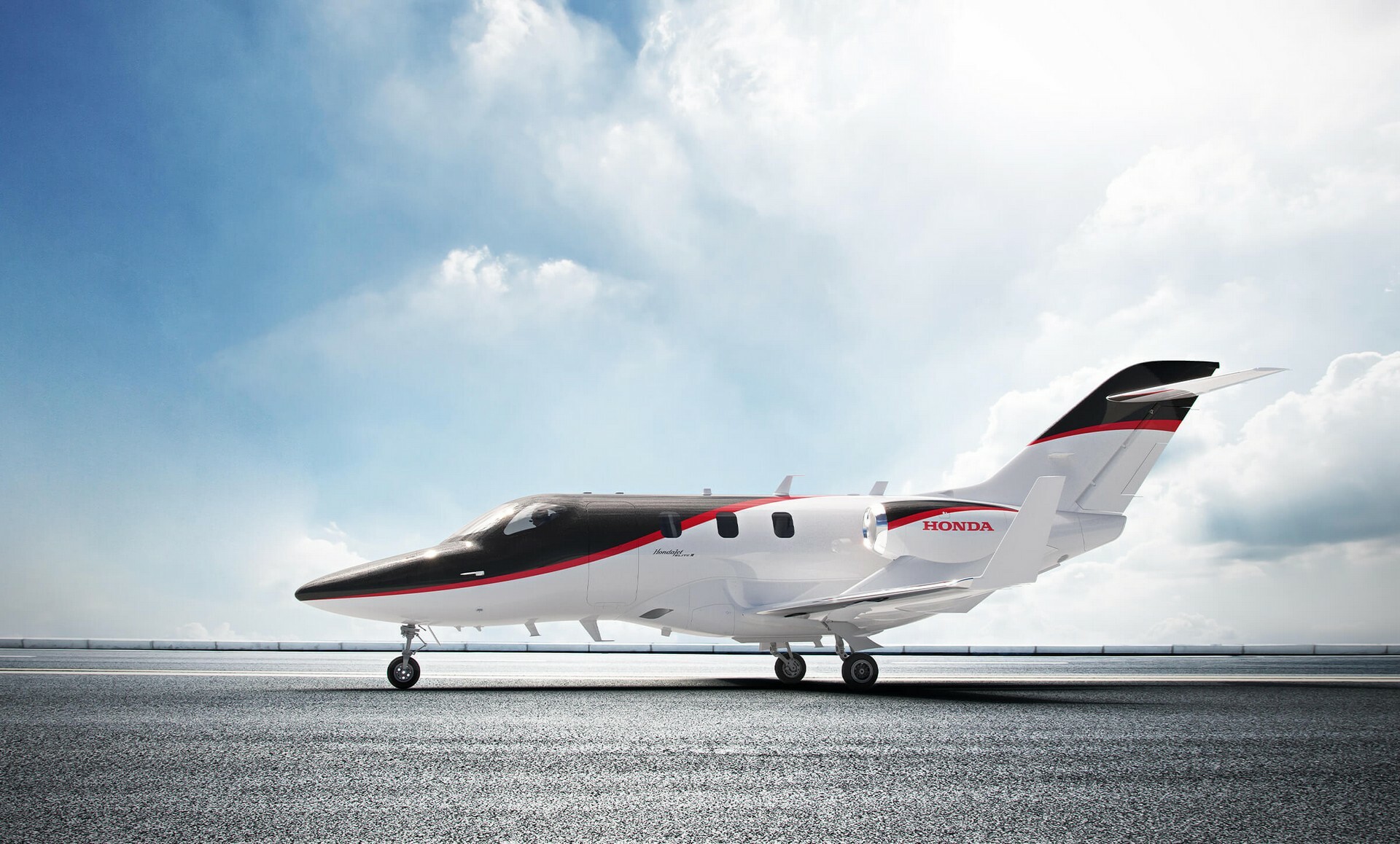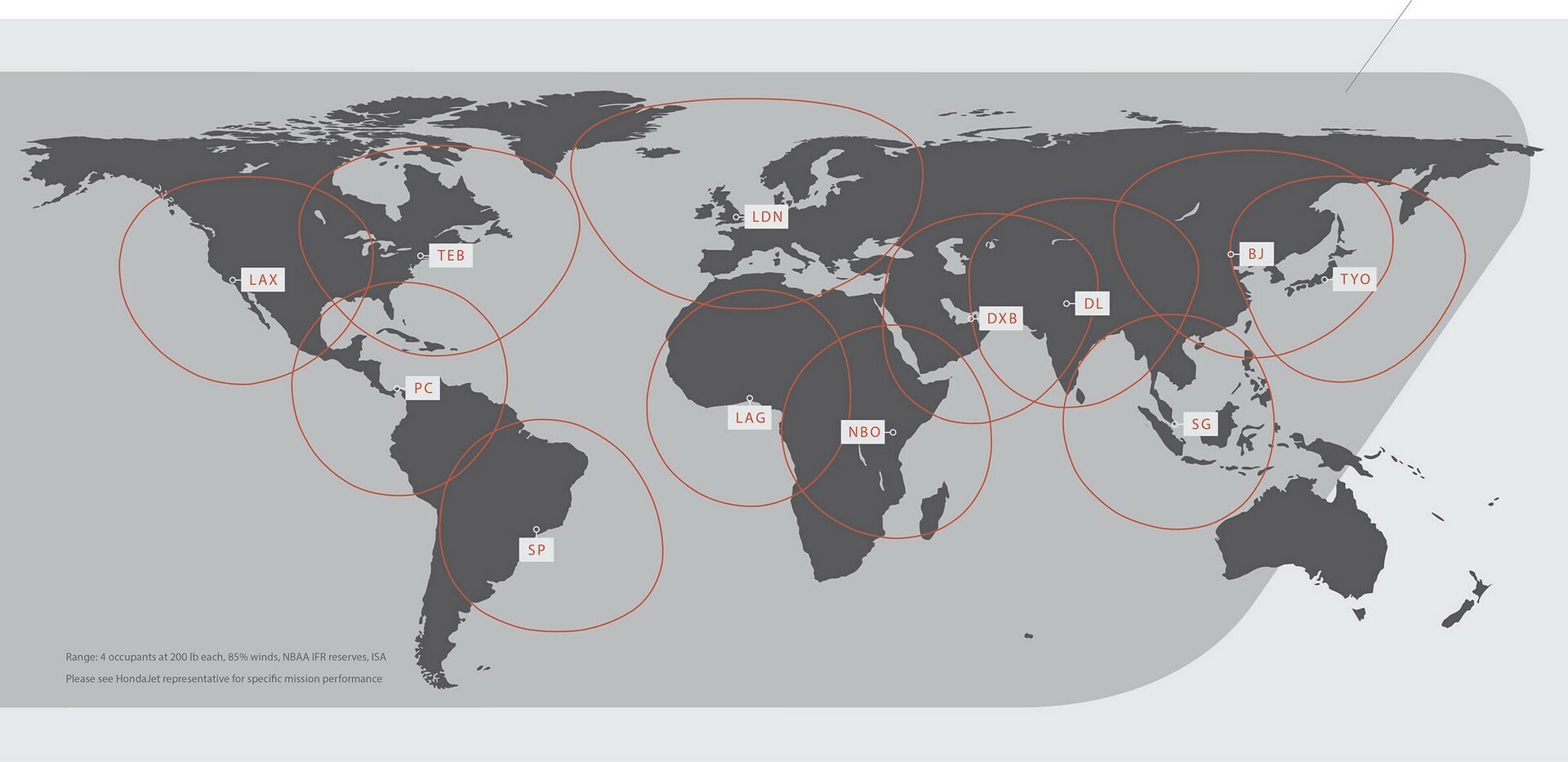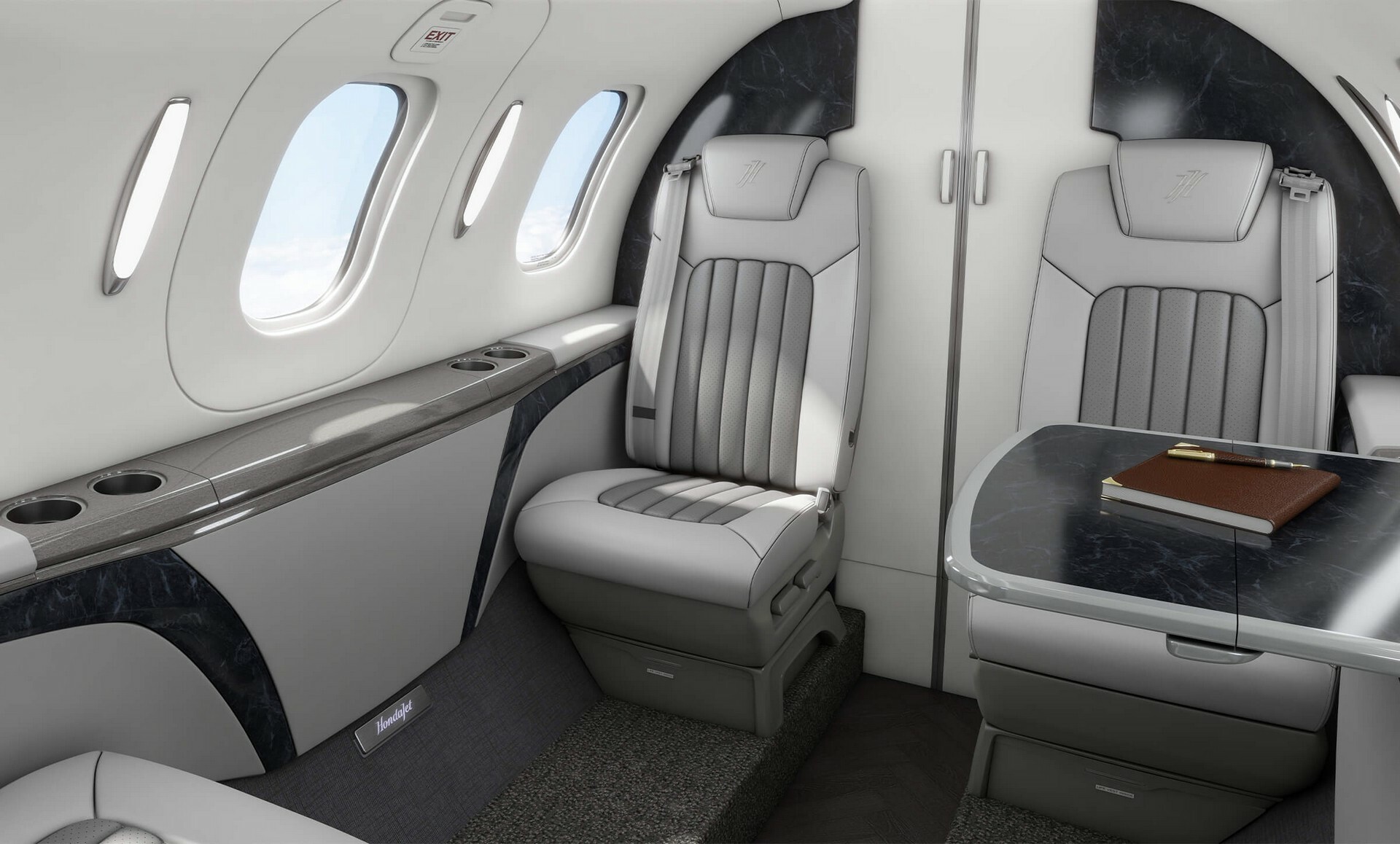Honda is leaving supercars in the rearview mirror with an all-new model that can travel 486 mph (782 km/h). However, this is no NSX successor as the company has unveiled the HondaJet Elite II at the European Business Aviation Convention and Exhibition in Geneva, Switzerland.
Billed as the “fastest, farthest and highest-flying plane in its class,” the HondaJet Elite II features a composite fuselage and a distinctive over-the-wing engine mount configuration. Speaking of which, the model is powered by a pair of GE Honda HF120 engines that each produce 2,050 pounds of thrust.
The Elite II can takeoff on runways as short as 3,699 feet (1,128 meters) and travel up to 1,547 nautical miles (2,865 km) with four occupants onboard. Honda went on to say the model has the largest cabin in its class and is the “most fuel-efficient jet.”
More: HondaJet Elite S Business Jet Gets Longer Range, New Avionics
The standard configuration accommodates one crew member and six passengers, but a seven passenger variant is also available. Honda didn’t say much else about the interior, but it has “improved acoustic treatments throughout the cabin” as well as a Bongiovi aviation audio system. The model also has 62 cubic feet (1,756 liters) of storage space.
Customers can choose between Onyx or Steel interiors and each features an “executive club arrangement” with two-tone leather seats that articulate and swivel to optimize comfort. The model also has a fully-enclosed lavatory, which is described as “bright and airy” as well as private and inviting.
The aircraft is equipped with a Garmin G3000 avionics suite and features automated anti-ice, lighting and pressurization systems as well as under-speed protection. More interestingly, the plane will eventually be offered with an Emergency Autoland function, which can “autonomously control and land the aircraft without human intervention.” The system is presumably designed to save occupants in the event of pilot incapacitation.
Pricing remains up in the air, but Honda said the Elite II has received type certification from the U.S. Federal Aviation Administration and is expected to receive certification from the European Union Aviation Safety Agency soon.




